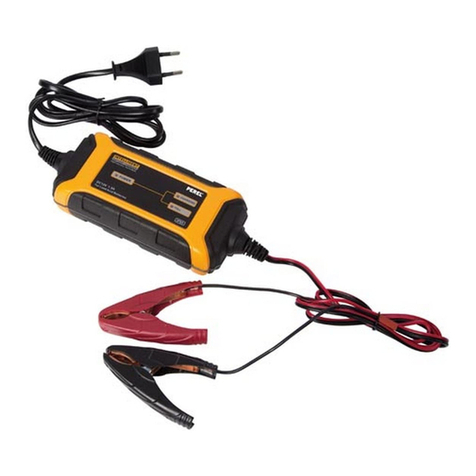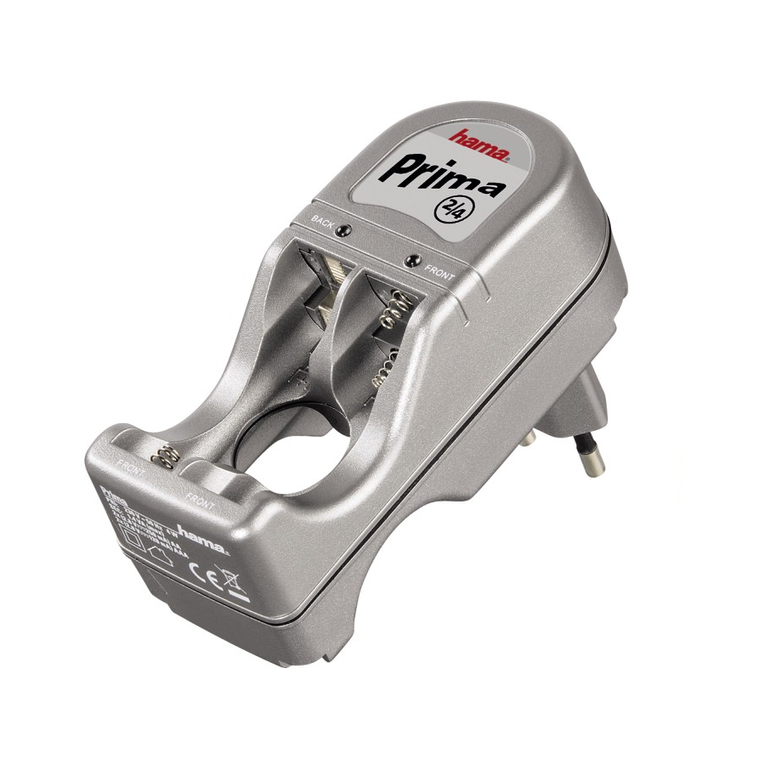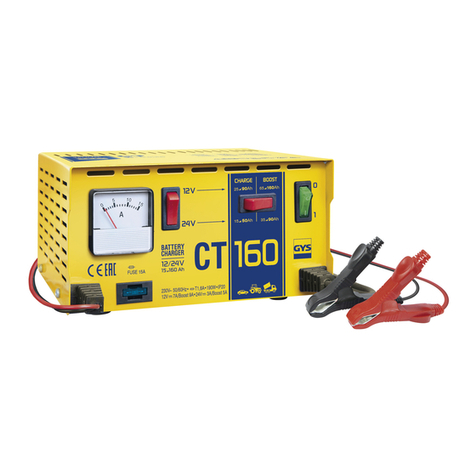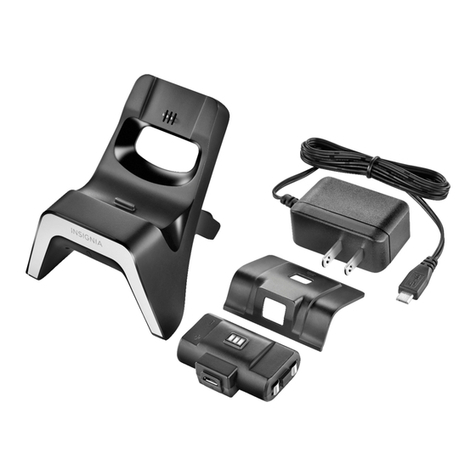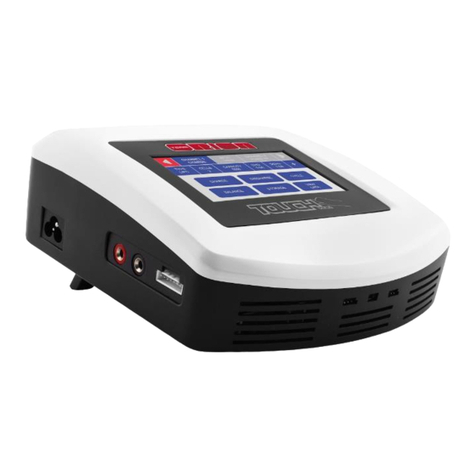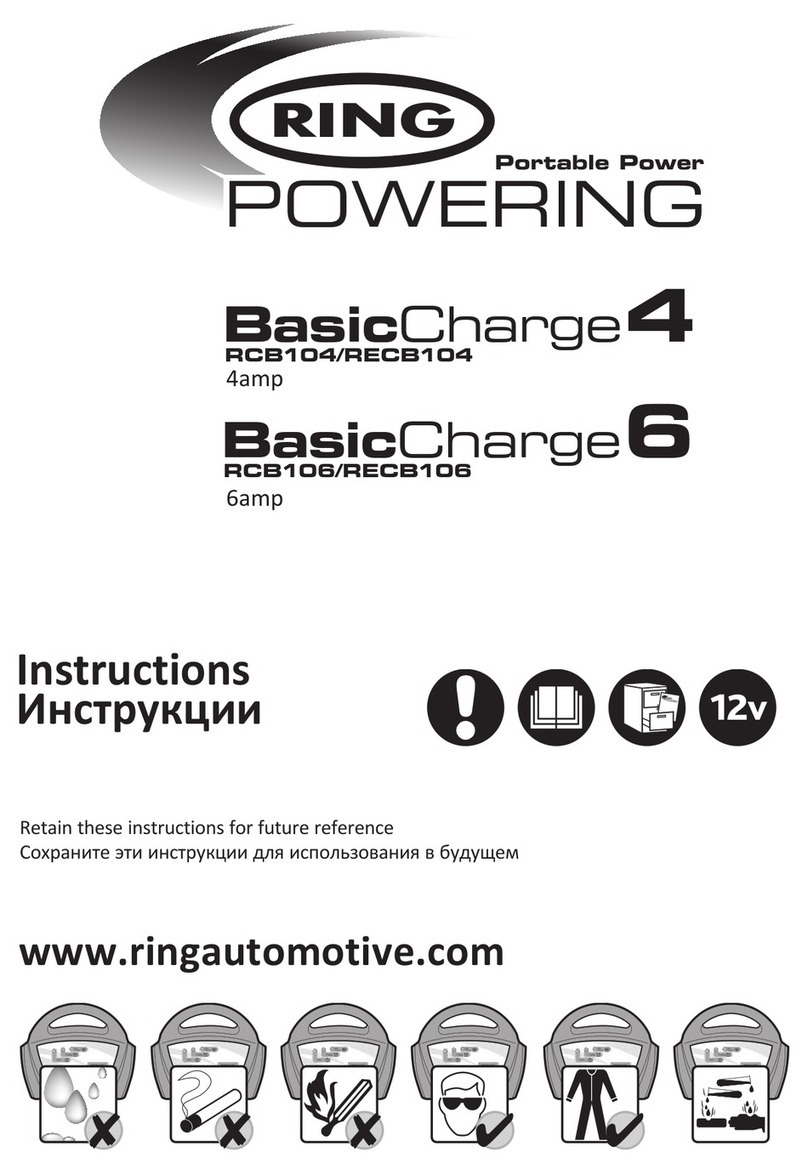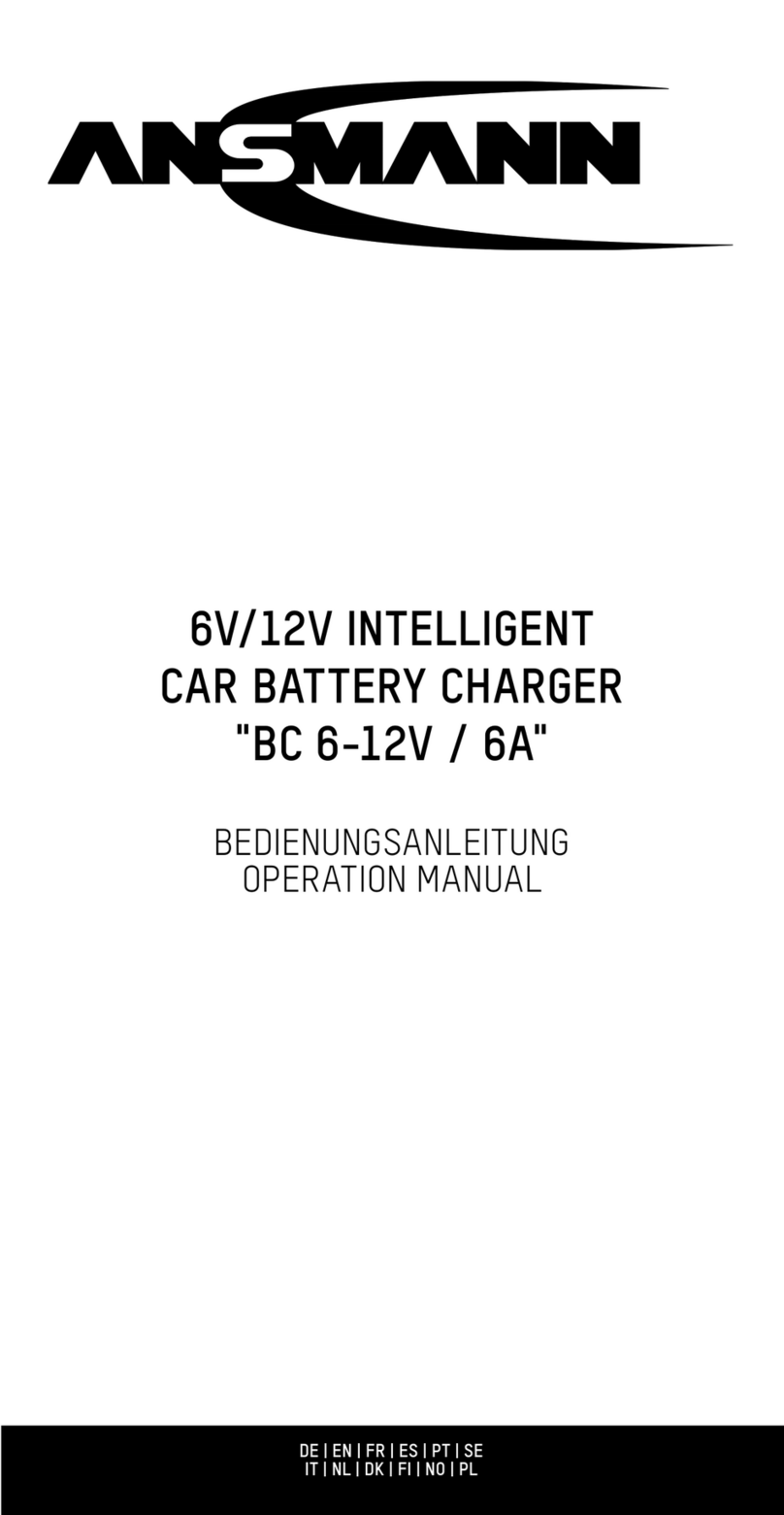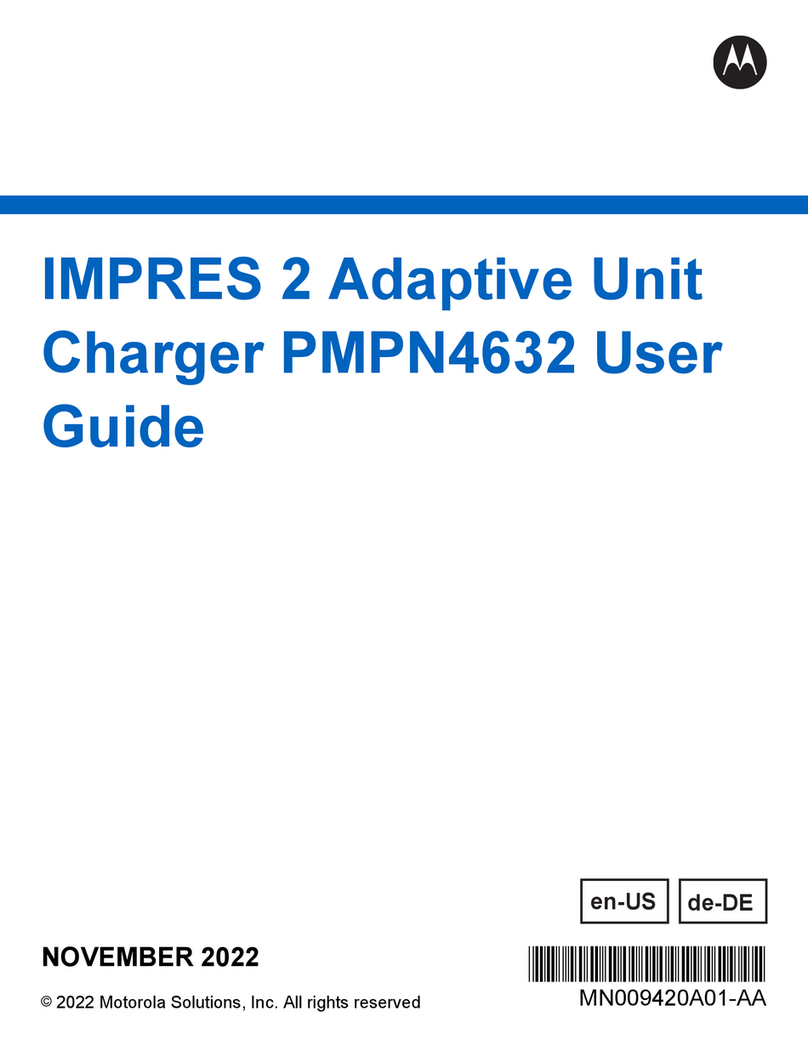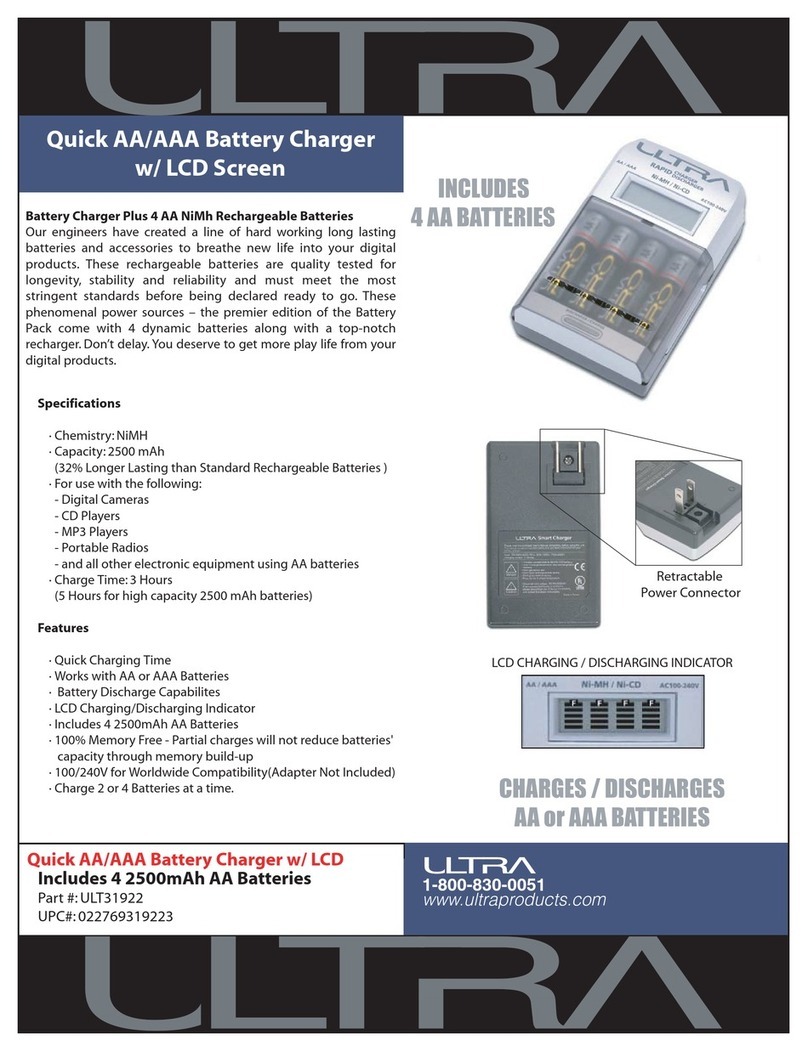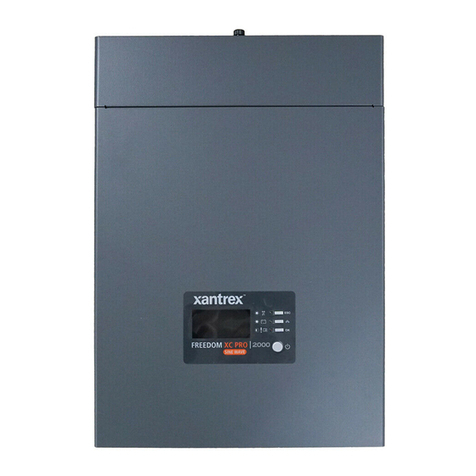HEIDELBERG Stele Solo User manual

Heidelberg
Stele Solo/Stele Duo
Betriebsanleitung
Operating instructions
Manuel d'instructions
Istruzioni per l'uso
Gebruiksaanwijzing
Manual de servicio
Instrukcja obsługi
Üzemeltetési tmutató
Manual de instruções
Upute za uporabu
Manual de exploatare
Ръководство за експлоатация
Návod k obsluze
Navodila za uporabo
Návod na používanie
Εγχειρίδιο οδηγιών χρήσης
Kasutusjuhend
Manual
Bruksanvisning
Käyttöohje
Naudojimo instrukcija
Ekspluatācijas instrukcija
Kullanım kılavuzu
https://wallbox.heidelberg.com/download

1
D 4
GB 8
F 11
I 15
L 18
E 22
PL 26
HU 29
PT 33
HR 36
RO 40
BG 44
CZ 48
SL 51
SK 55
GR 58
EE 62
DK 66
SE 69
FI 73
LT 76
LV 80
TR 83
Hotline: +49 6222 82-2266
Mail: Wallbox@heidelberg.com
Languages:german and english
Website: wallbox.heidelberg.com/
Specifications
1370 mm
180x180 mm
Solo 12,75 kg
Duo 14,40 kg
Stele (pc.)
Content Solo Duo
M6X16 4x 8x
M8 3x 6x
8 FST 1x 1x
A8 2x 2x
B8 1x 1x
M8 1x 1x
Bag 1x 1x
DA 300/350/30 1x 2x
DA 180/250/30 1x 2x
DG M25 2x 2x
Mounting Plate 1x 2x
Stele 1x 1x
I
II
III
IV
1
2
3
4
5
6
7
8
9
10
11
12

2
Stele Solo
Stele Duo
V
VI
1
2

3
180mm
180mm
140mm
140mm
100mm
Ø 14mm
3
4
5
6

4
1 Sicherheitshinweise
1.1 Hinweise an den Betreiber und
an den Bediener der Stele
Die vorliegende Betriebsanleitung ist Teil des
Produktes und für die Montage sowie einen
sicheren Betrieb zu befolgen.
Lesen Sie vor Inbetriebnahme der Stele die
Betriebsanleitung.
Stellen Sie sicher, dass alle Personen, die an
dieser Stele arbeiten oder sie benutzen
› die Betriebsanleitung gelesen haben,
› die Vorschriften und Anweisungen für
sicheres Arbeiten befolgen.
Bewahren Sie die Gerätedokumentation so
auf, dass sie den Bedienern der Stele immer
zur Verfügung steht.
Stellen Sie sicher, dass keine unbefugten
Personen Zugang zur Stele und den daran
montierten Ladesystem haben.
1.2 Besti ungsge äße
Verwendung
Die Stelen sind für den Einsatz im privaten und
halb-öffentlichen Bereich vorgesehen, z. B.
Privatgrundstücke, Firmenparkplätze oder
Betriebshöfe. Sie sind ausschließlich für die
freistehende Montage folgender Geräte im Innen-
oder Außenbereich bestimmt:
Heidelberg Wallbox Home Eco
Heidelberg Wallbox Energy Control
Heidelberg Combox
Informationen über eventuell weitere kompatible
Wallboxen sind auf der Homepage
https://wallbox.heidelberg.com ersichtlich.
Die Stele Solo ist für die Montage eines Gerätes,
die Stele Duo für die Montage von zwei Geräten
bestimmt.
Die ausschließliche Montage eines Gerätes an
der Stele Duo ist nicht bestimmunsggemäß!
Stellen Sie sicher, dass alle Montage- und
Kabelöffnungen nach der Montage verschlossen
sind.
Die elektrische Installation, Inbetriebnahme und
Wartung darf nur durch qualifizierte
Elektrofachkräfte erfolgen, die vom Betreiber dazu
autorisiert wurden. Die qualifizierten
Elektrofachkräfte müssen die Dokumentation
gelesen und verstanden haben und deren
Anweisungen befolgen.
Anforderungen an die Qualifikation von
Elektrofachkräften
Kenntnis und Beachtung der 5 Sicherheitsregeln
für das Arbeiten an elektrischen Anlagen:
Freischalten.
Gegen Wiedereinschalten sichern.
Spannungsfreiheit feststellen.
Erden und kurzschließen.
Benachbarte, unter Spannung stehende Teile
abdecken oder abschranken.
Das Wiedereinschalten erfolgt in umgekehrter
Reihenfolge.
Kenntnis der allgemeinen und speziellen
Sicherheitsvorschriften und
Unfallverhütungsvorschriften.
Kenntnis der einschlägigen
elektrotechnischen Vorschriften z. B. für die
Prüfung bei Erstinbetriebnahme und die
Anforderungen für Betriebsstätten, Räume
und Anlagen besonderer Art -
Stromversorgung von Elektrofahrzeugen.
Fähigkeit, Risiken zu erkennen und mögliche
Gefährdungen zu vermeiden.
Die nationalen Sicherheitsvorschriften und
Unfallverhütungsvorschriften sind bei der
Bereitstellung der Stele und beim Umgang mit der
Stele vom Betreiber, vom Bediener und von der
Elektrofachkraft zu beachten. Die nicht
bestimmungsgemäße Verwendung sowie die
ichtbeachtung der Bedienungsanleitung kann
gefährden:
Ihr Leben,
Ihre Gesundheit,
Ladesystem und Fahrzeug.
Prüfen Sie vor jeder Verwendung, dass die Stele
unbeschädigt ist.
Die Stele darf nur für den in der Betriebsanleitung
definierten Verwendungszweck eingesetzt
werden.
Veränderungen wie An- und Umbauten, die nicht
vom Hersteller vorgesehen sind, oder unzulässige
Belastungen sind nicht bestimmungsgemäß.
Beachten Sie ergänzend zu der vorliegenden
Betriebsanleitung der Stele die
Sicherheitshinweise sowie die Montage- und
Bedienungsanleitungen der montierbaren Geräte .
Heidelberg kann nur für den Auslieferungszustand
der Stele und für alle von Heidelberg-
Fachpersonal geleisteten Arbeiten Verantwortung
übernehmen.
D A CH

5
1.3 Hinweise zu verwendeten
Zeichen, Sy bolen und
Kennzeichnungen
Gefahrenhinweis:
Hinweis auf eine möglicherweise gefährliche
Situation, die zum Tod oder zu schweren
Verletzungen führen kann, wenn die
Sicherheitsmaßnahmen nicht befolgt werden.
Arbeiten dürfen nur durch Fachkundige Personen
ausgeführt werden.
Hinweis:
Weitere Informationen sind der Betriebsanleitung
zu entnehmen.
Hinweis: ergänzende Informationen.
2 Montage
2.1 Lieferu fang
Überprüfen Sie den Lieferumfang auf
Vollständigkeit und Beschädigungen (Abb. III -
VI).
Unterlassen Sie die Montage bei nicht
vollständigem Lieferumfang oder
Beschädigung von Teilen.
Kontaktieren Sie in diesen Fällen die Service
Hotline.
Wählen ie Befestigungsschrauben mit einen
Durchmesser von 10 – 13,5 mm. Verwenden ie
ein zum Montageuntergrund passendes
Befestigungssystem.
2.2 Standortvorgaben
Beachten Sie die Umgebungsbedingungen
und baurechtlichen Vorschriften am
Aufstellungsort.
Erstellen Sie bei der Montage der Stele auf
Parkplätzen oder in Tiefgaragen bauseits
einen geeigneten Rammschutz.
Stellen Sie bei der Montage einer oder
mehrerer Stelen einen ausreichenden
Abstand zwischen den Stelen und anderen
örtlichen Gegebenheiten sicher, um eine gute
und sichere Handhabung der daran
montierten Geräte zu ermöglichen.
Beachten Sie die Standortanforderungen in
den Betriebsanleitungen der montierten
Geräte.
Stellen Sie die Stele nur auf einem
waagrechten, ebenen und tragfähigen
Untergrund auf.
Die Aufstellung der Stele auf Asphalt ist nicht
bestimmungsgemäß.
Stellen Sie für die Montage der Stele ein
geeignetes Betonfundament her
(beispielsweise frostsicher gegründet, Beton:
C30/37 LP für XC4, XD1, XF4 bzw. C25/30
LP für XC4, XD1, XF2).
Stellen Sie sicher, dass die Verankerung im
Fundament den maximalen Auszugskräften
von 7500 m sowie den maximalen
Scherkräften von 2000 m an jedem der vier
Befestigungspunkte widersteht.
Beachten Sie bei der Montage die Hinweise
des Herstellers des verwendeten
Befestigungssystems (beispielsweise Dübel,
Schwerlastanker).
Stellen Sie sicher das eventuell in den Sockel
eingedrungenes Wasser über den Untergrund
abläuft.
2.3 Elektrische Besti ungen
Kabelausführung
Stellen Sie sicher, dass die Kabel für eine
mittlere bzw. schwere mechanische
Beanspruchung ausgelegt sind. Verwenden
Sie beispielsweise:
› PVC Installationsleitung vom Typ YM,
› PVC Erdkabel vom Typ YY,
› H07R -F schwere Gummileitung.
Stellen sie sicher, dass
› die Kabel min.1,7 m und
› die Leerrohre oder Schutzschläuche min.
0,3m am Fundament überstehen.
Verwenden Sie zur Sicherstellung des Basis-
und Fehlerschutzes nur Kabel mit doppelter
Isolierung.
Wählen Sie die Kabel gemäß nationaler
Installationsvorschriften aus (beispielsweise
IEC 60364-5-52; VDE 0100-520, IEC 60364-
4-41, VDE 0100-410, IEC 60364-7-722,
VDE 0100-722).
Beachten ie bei der Auswahl der Kabel den
Klemm- und Dichtungsbereich der
Verschraubungen und Membrannippel der
montierten Geräte.
Trennung von Leistungs- und
Datenkabel
Verwenden Sie nur Leistungs- und
Datenkabel deren Isolationsfähigkeit der
höchsten auftretenden Betriebsspannung
entspricht.

6
Als Datenkabel gelten z. B. Netzwerkkabel
(ModBus) oder chaltkabel (z. B. von
chlüsselschaltern).
Wenden Sie bei nicht ausreichender
Isolationsfestigkeit des Datenkabels
zusätzliche Maßnahmen nach nationalen
Vorschriften an (z. B. zusätzlicher Schutz
durch ein Isolationsrohr).
Abschalten i Fehlerfall
Sichern Sie die Leistungskabel gemäß
nationaler Installationsvorschriften ab.
(beispielsweise IEC 60364-4-41, VDE 0100-
410, IEC 60364-4-42 VDE 0100-420,
IEC 60364-7-722, VDE 0100-722).
Schutzpotenzialausgleich
Stellen Sie einen Schutzpotenzialausgleich
gemäß nationaler Installationsvorschriften
(beispielsweise IEC 60364-4-41; VDE 0100-
410) an der gekennzeichnetet Anschlussstelle
(Abb. 1/1) in der Stele her.
Stellen Sie sicher, dass der
Mindestquerschnitt: 6 mm² für Kupfer und 16
mm² für Aluminium nicht unterschritten wird.
Prüfen Sie den Schutzpotentialausgleich nach
der Installation gemäß nationaler Vorschriften,
beispielsweise IEC 60364-6, VDE 0100-600.
Stellen Sie sicher, dass der Widerstandswert
1 Ω nicht übersteigt.
Prüfungen
Prüfen Sie vor der Inbetriebnahme die Stele
mit montierten Geräten gemäß nationaler
Vorschriften beispielsweise IEC 60364-6,
VDE 0100-600.
2.4 Montage der Stele
Beachten ie zusätzlich zu den Vorgaben dieser
Betriebsanleitung auch die örtlichen Vorgaben für
Montage und Betrieb. Bei der Montage der Geräte
an der tele sind zusätzlich deren
icherheitshinweise und Montageanleitungen zu
befolgen.
Werkzeuge zur Montage
Die Montage und elektrotechnische Installation
muss durch eine qualifizierte Fachkraft erfolgen.
Setzen Sie zur Montage geeignetes Werkzeug
ein.
Schutz der Kabel bei der Montage
Stellen Sie sicher, dass bei der Montage
keine Beschädigung der Kabel erfolgt und
schützen Sie ggfls. die Kabel bei der
Installation.
Prüfen Sie nach der Installation die Kabel auf
Beschädigungen.
Montage der Stele, bei
Kabeleinführung durch die Bodenplatte
1. Zeichnen Sie die vier Bohrungen auf dem
Betonfundament an. Entnehmen Sie die
Bohrmaße aus Abb. 2/1.
2. Bohren Sie die vier Befestigungslöcher
(Durchmesser und Tiefe entsprechend der
verwendeten Befestigungsmittel).
3. Führen Sie alle Kabel durch die Mitte des
Betonfundaments, innerhalb einer
quadratischen Fläche von max. 50 mm x 50
mm durch Leerrohre oder Schutzschläuche in
die Stele ein.
4. Führen Sie die Kabel durch die oberen,
zugehörigen Montageöffnungen wieder
heraus.
Das Einführen der Anschlusskabel bei liegender
tele erleichtert die Vorgehensweise. Achten ie
auf die richtige Zuordnung der Kabel zur
jeweiligen Wallbox.
5. Schließen Sie die separate
Schutzpotenzialausgleichsleitung in der Stele
(Abb. 1/1) an.
6. Befestigen Sie die Stele mit 4 Schrauben auf
dem Fundament.
7. Verschließen Sie auf der Rückseite der Stele
Solo die Kabeleinführung für datenführenden
Kabel mit dem im Beipack befindlichen
Blindstopfen (Abb. 3/1).
Kontrollieren Sie, ob das Abdeckblech (Abb.
3/2) der Kabeleinführung für
leistungsführende Kabel montiert ist.
Montage der Stele, bei rückseitiger
Kabeleinführung (nur Stele Solo)
1. Führen Sie die Schritte 1-2 des Abschnitts
2.4.3 durch.
2. Führen Sie die
Anschlussleitung/Anschlussleitungen in einem
Leerrohr/Kabelkanal zur gewünschten
Montageposition.
Legen ie die Anschlussleitung zur tele so, dass
keine tolpergefahr entsteht.
3. Entfernen Sie das Abdeckblech der
Kabeleinführung für das Leistungskabel (Abb.
4/1). Befestigen Sie die Durchführungstülle
(Beipack) für das Leistungskabel an der
Kabeleinführung (Abb. 4/3).
4. Montieren Sie die im Beipack enthaltene,
Durchführungstülle (Beipack) für das

7
Datenkabel an der entsprechenden
Kabeleinführung (Abb. 4/2). Verschließen Sie
die Kabeldurchführung des Datenkabels wenn
diese nicht verwendet wird mit den
beiliegenden Blindstopfen (Beipack).
5. Führen Sie die Kabel in die Stele ein und
durch die oberen, zugehörigen
Montageöffnungen wieder heraus.
Das Einführen der Anschlusskabel bei liegender
tele erleichtert die Vorgehensweise.
6. Schließen Sie die separate
Schutzpotenzialausgleichsleitung in der Stele
(Abb. 1/1) an.
7. Richten Sie die Stele auf und befestigen Sie
diese mit 4 Schrauben auf dem Fundament.
2.5 Befestigung der Adapterplatten
1. Montieren Sie die im Beipack enthaltenen,
Durchführungstüllen (Abb. 5/1) an den
jeweiligen Kabeldurchführungen für Daten-
und Leistungskabel der Adapterplatten.
Verschließen ie die Kabeldurchführungen der
Datenkabel wenn diese nicht verwendet werden
mit den beiliegenden Blindstopfen.
2. Führen Sie die Kabel durch die
entsprechenden Kabeldurchführungen (Abb.
5/1) der jeweiligen Adapterplatte aus der Stele
heraus.
3. Befestigen Sie die Adapterplatte/-n (Abb. 6/1)
an der Stele mit vier Senkkopfschrauben
M6x16 aus dem Beipack. Ziehen Sie die
Schrauben mit einem Drehmoment von 7 m
an. Montieren Sie an der Stele Duo zuerst die
Adapterplatte auf der Seite mit der kleineren
Montageöffnung.
2.6 Mechanische und elektrische
Montage der Geräte
Montieren und Installieren Sie die Geräte gemäß
der zugehörigen Betriebsanleitung.
2.7 Pflege und Reinigung
Reinigen Sie die Edelstahlstele bei Bedarf mit
einem Edelstahlreiniger.
Entfernen Sie eventuell entstehenden
Flugrost mit einem Schleifvlies oder
Ähnlichem.
Reinigen Sie die Stele niemals mit
Strahlwasser (Gartenschlauch,
Hochdruckreiniger usw.).
Verwenden Sie niemals aggressive
Reinigungsmittel.
Beachten ie die Anwendungshinweise des
Herstellers des Reinigungsmittels. Testen ie das
Reinigungsmittel immer erst an einer unauffälligen
telle auf Verträglichkeit.
2.8 Vorgehensweise bei
Beschädigungen
Reparieren Sie niemals eine beschädigte
Stele.
Setzen Sie bei Beschädigungen die Stele
sowie daran montierte Geräte durch eine
qualifizierte Fachkraft außer Betrieb.

8
1 Safety Infor ation
1.1 Infor ation for the operator and
users of the colu n
The operating instructions are part of the product
and they must be observed to ensure proper
mounting and reliable operation.
Read the operating instructions first before
putting the column into operation.
Make sure that everyone who works on this
column or who uses it
› has read the operating instructions,
› observes the specifications and
instructions for safe working.
Keep the device documentation in a safe
place so that it is always available to column
operators.
Make sure that unauthorised persons do not
have access to the column and the charging
system mounted on it.
1.2 Intended use
The columns are intended to be used in the
private and semi-public sector, e.g. on private
property, company parking areas or machinery
and equipment yards They are only intended to be
used for the free-standing mounting of the
following devices indoors and outdoors:
Heidelberg Wallbox Home Eco
Heidelberg Wallbox Energy Control
Heidelberg Combox
Information about other compatible Wallboxes is
available on the homepage
https://wallbox.heidelberg.com.
The Stele Solo column is used for mounting one
device, while the Stele Duo column is used for
mounting two devices.
Mounting a single device only to the Stele Duo
column does not meet the requirements of
intended use.
Once fully mounted, make sure that all mounting
and cable openings have been sealed off.
The electrical installation, start-up, and
maintenance of the column may only be
performed by qualified electricians who have been
correspondingly authorized by the operator. The
qualified electricians must have read and
understood the documentation and must comply
with its instructions.
Requirements regarding the qualification of
electricians
Knowledge of and compliance with the 5 safety
rules for working with electrical installations:
Isolate.
Secure against being switched on again.
Check for absence of voltage.
Earthing and short circuiting.
Cover up or cordon off adjacent parts that are
energised.
Switch-on is carried out in reverse order.
Knowledge of the general and special safety
regulations and accident prevention
regulations.
Knowledge of the relevant electrotechnical
regulations, e.g. checks associated with start-
up and the requirements for operating
facilities, premises, and special types of
equipment - power supply for electric vehicles.
Ability to recognize risks and to avoid potential
hazards.
When delivering and handling the column, the
operator, users, and the electrician must comply
with the national regulations on safety and
accident prevention. Improper use and non-
compliance with the operating instructions may
jeopardize:
your life,
your health,
the charging system and the vehicle.
Before using, always check for any damage to the
column.
The column may only be used for the intended
purpose as defined in the operating instructions.
Modifications such as attachments or conversions
not intended by the manufacturer, or
impermissible loads do not meet the requirements
of intended use.
In addition to the operating instructions for the
column, also observe the safety instructions and
the instructions for mounting and operating the
devices designated to be mounted.
Heidelberg shall only bear responsibility for the
as-delivered condition of the column and for all
work performed by skilled Heidelberg personnel.
GB

9
1.3 Infor ation about signs, sy bols
and labelling
Hazard warning:
Information about a possibly hazardous situation
that could be fatal or result in severe injuries if the
safety measures are not observed. All work is to
be conducted by skilled personnel only.
ote:
More information is available in the operating
instructions.
ote: Supplementary information.
2 Installation
2.1 Scope of supply
Check the scope of supply for completeness
and any damage (Fig. III - VI).
Do not perform the mounting procedure if the
scope of supply is not complete or if there are
any damaged parts.
Where this is the case, get in touch with the
Service Hotline.
Use mounting screws with a diameter of 10 - 13.5
mm. Use a suitable system of attachment for the
mounting foundation.
2.2 Location require ents
Observe the environmental conditions and the
building regulations at the installation location.
When mounting the column on parking areas
or in underground parking garages, provide
suitable impact protection on site.
When mounting one or more columns, make
sure there is sufficient spacing between the
columns and other local conditions, to ensure
that the devices mounted to them can be
handled easily and safely.
Observe the location requirements in the
operating instructions for the mounted
devices.
Mount the column on a horizontal, flat and
solid footing.
Mounting the column on an asphalt base does
not meet the given requirements.
Mount the column on a suitable concrete
foundation (for example, based on frost-
protected, concrete: C30/37 LP for XC4, XD1,
XF4 or C25/30 LP for XC4, XD1, XF2).
Make sure that the anchorage in the
foundation can withstand the maximum
extraction forces of 7500 m as well as the
maximum shearing forces of 2000 m at each
of the four attachment points.
When mounting, observe the information
provided by the manufacturer of the fastening
system used (for example, dowels, heavy-
duty anchors).
Make sure that any water that has entered the
column can drain off through the foundation.
2.3 Electrical require ents
Cable design
Make sure that the cables are designed for
medium to heavy mechanical loads. Use, for
example:
› PVC installation instructions, type YM,
› PVC underground cable, type YY,
› H07R -F heavy-duty rubber line.
Make sure that
› the cables are at least 1.7 m and
› the empty conduits or protective sleeves
protrude at least 0.3 m over the
foundation.
Use cables with double insulation only, to
ensure basic and fault protection are given.
Select the cable in accordance with national
installation specifications (for example IEC
60364-5-52; VDE 0100-520, IEC60364-4-41,
VDE0100-410, IEC60364-7-722, VDE0100-
722).
When selecting the cables, observe the clamping
and sealing areas of the bolted connections and
the membrane nipples for the mounted devices.
Separation of power cables and data
cables
Only use power cables and data cables with
an insulating property that matches the
maximum applied operating voltage.
Data cables are understood to refer to, e.g.
network cables (ModBus) or switchboard cables
(e.g. of key-operated switches).
If the data cable does not have the specified
level of insulation property, use additional
measures in accordance with national
regulations (e.g. additional protection in the
form of an insulating conduit).

10
Switching off in event of a fault
Protect the power cable in accordance with
the national installation specifications (for
example, IEC60364-4-41, VDE0100-410, IEC
60364-4-42 VDE 0100-420, IEC60364-7-722,
VDE0100-722).
Protective equipotential bonding
Establish protective equipotential bonding in
accordance with the national installation
instructions (for example, IEC 60364-4-41;
VDE 0100-410) at the denoted connection
point (Fig. 1/1) in the column.
Make sure that the minimum cross section: of
6 mm² for copper and 16 mm² for aluminium is
not dropped below.
After installation, check the protective
equipotential bonding in accordance with the
national regulations, for example, IEC 60364-
6, VDE 0100-600.
Make sure that the resistance value does not
exceed 1 Ω.
Tests
Before commissioning the column with its
mounted devices, run a test in accordance
with national regulations, for example, IEC
60364-6, VDE 0100-600.
2.4 Mounting the colu n
Along with the specifications given in these
operating instructions, also observe the local
specifications for mounting and operation. When
mounting devices onto the column, observe the
additional safety information and installation
instructions.
Tools for ounting
The mounting and electrotechnical installation
must be conducted by skilled personnel. Use a
suitable tool when mounting.
Protecting cables when ounting
When mounting, make sure that no cables are
damaged and, if necessary, protect the cables
during installation.
After installation, check the cables for any
damage.
Mounting the colu n, with cable entry
through the base plate
1. Draw the four holes on the concrete
foundation. The drilling dimensions are
available in Fig. 2/1.
2. Drill the four mounting holes (diameter and
depth corresponding to the fasteners being
used).
3. Route all the cables through the centre of the
concrete foundation, within a quadratic
maximum surface area of 50 mm x 50 mm
through empty conduits or protective sleeves
in the column.
4. Route the cables out again through the upper,
associated mounting holes.
The procedure is made easier, if you insert the
connecting cable when the column is lying on its
side. Check that the cables are correctly assigned
to the respective Wallbox.
5. Connect the separate protective equipotential
bonding line to the column (Fig. 1/1).
6. Use the 4 screws to fix the column in place on
the foundation.
7. On the rear of the Stele Solo column, seal off
the cable entry for the data-carrying cable
using the dummy plug included in the
package contents (Fig. 3/1).
Check if the cover plate (Fig. 3/2) of the cable
entry for the power cable has been fitted.
Mounting the colu n, with cable entry
on the rear (Stele Solo colu n only).
1. Perform steps 1-2 of the section 2.4.3.
2. Route the connecting line(s) into an empty
conduit/cable duct to the required mounting
position.
Route the connecting line to the column so that it
does not present any risk of tripping.
3. Remove the cable entry’s cover plate for the
power cable (Fig. 4/1). Attach the grommet
(accessory pack) for the power cable to the
cable entry (Fig. 4/3).
4. Attach the grommet included in the accessory
pack to the corresponding cable entry for the
data cable (Fig. 4/2). Seal the cable passage
of the data cable if it is not used with the
dummy plug included (accessory pack).
5. Route the cables into the cable entry and
through the upper associated mounting holes.
The procedure is made easier if you insert the
connecting cable when the column is lying on its
side.
6. Connect the separate protective equipotential
bonding line to the column (Fig. 1/1).
7. Align the column and fix it in place on the
foundation using the 4 screws.

11
2.5 Attach ent of the adapter plates
1. Mount the grommets included in the
accessory pack (Fig. 5/1) to the respective
cable passages for the data and power cables
on the adapter plates.
eal the cable passages of the data cables if they
are not used with the dummy plugs included.
2. Route the cables through the corresponding
cable passages (Fig. 5/1) of the respective
adapter plate and out of the column.
3. Attach the adapter plate(s) (Fig. 6/1) to the
column using the four countersunk screws
M6x16 included in the accessory pack.
Tighten the screws to a tightening torque of 7
m. Start on the Stele Duo column first by
mounting the adapter plate on the side with
the smaller installation opening.
2.6 Mechanical and electrical
ounting of the devices
Mount and install the devices in accordance with
the operating instructions.
2.7 Maintenance and cleaning
Clean the stainless-steel column, if
necessary, using a stainless-steel cleaning
agent.
Remove any resulting surface rust using an
abrasive nonwoven fabric.
ever clean the column using a water jet
(garden hose, high-pressure cleaner etc.).
ever use aggressive cleaning agents.
Observe the cleaning agent manufacturer’s
instructions for use. Always check the cleaning
agent for compatibility at an inconspicuous
position on the column.
2.8 What to do in the event of
da age
ever repair a damaged column.
If the column is damaged, have the column
and any devices mounted on it put out of
operation by a skilled specialist.
1 Consignes de sécurité
1.1 Infor ations à l'intention de
l'exploitant et de l'utilisateur de la
borne
Le présent manuel d'instructions est fourni avec le
produit et doit être respecté pour procéder au
montage et afin de garantir un fonctionnement
sûr.
Lisez attentivement le manuel d'instructions
avant la mise en service de la borne.
Assurez-vous que toutes les personnes qui
manipulent ou utilisent cette borne
› ont bien lu le manuel d'instructions,
› respectent les consignes et prescriptions
qui contribuent au fonctionnement sûr.
Conservez la documentation de l'appareil de
manière à ce qu'elle soit toujours à la
disposition de l'exploitant de la borne.
Assurez-vous qu'aucune personne non
autorisée n'a accès à la borne ni au système
de charge monté dessus.
1.2 Utilisation confor e
Les bornes sont prévues pour une utilisation dans
des zones privées et semi-publiques, par ex. les
propriétés privées, les parkings d'entreprises ou
les lieux d'accès aux entreprises. Elles sont
exclusivement conçues pour l'installation
autonome en intérieur ou en extérieur des
appareils suivants :
Heidelberg Wallbox Home Eco
Heidelberg Wallbox Energy Control
Heidelberg Combox
Pour plus d'informations sur les autres Wallbox
compatibles, rendez-vous sur la page
https://wallbox.heidelberg.com.
La borne Solo se prête au montage d'un appareil,
la borne Duo au montage de deux appareils.
Le montage exclusif d'un appareil sur la borne
Duo n'est pas conforme !
Assurez-vous que toutes les ouvertures de
montage et de câbles sont bien fermées une fois
le montage terminé.
L'installation électrique, la mise en service et la
maintenance doivent uniquement être assurées
par un électricien qualifié et mandaté par
l'exploitant. L'électricien qualifié doit s'assurer de
lire et de comprendre la documentation et de
respecter les indications qui y figurent.
Exigences de qualification de l'électricien
F

12
Connaissance et respect des 5 règles de sécurité
pour la manipulation des installations électriques :
Déverrouiller
Sécuriser contre le redémarrage
Déterminer l’absence de tension
Mettre à la terre et court-circuiter
Couvrir ou isoler les pièces adjacentes sous
tension
Le redémarrage se produit dans l'ordre inverse.
Connaissance des réglementations générales
et spécifiques relatives à la sécurité et à la
prévention des accidents.
Connaissance des réglementations
électriques pertinentes par ex. pour la
surveillance lors de la première mise en
service et pour les consignes relatives aux
sites de production, aux pièces et installations
de type particulier - Alimentation électrique
des véhicules électriques.
Capacité à reconnaître les risques et à éviter
les dangers éventuels.
Les réglementations nationales relatives à la
sécurité et à la prévention des accidents doivent
être respectées lors de préparation de la borne
ainsi que de la manipulation de la borne par
l'exploitant, l'utilisateur et l'électricien. L'utilisation
non conforme et le non-respect des instructions
de service peuvent représenter un danger pour :
votre vie,
votre santé,
le système de charge et le véhicule.
Vérifiez que la borne ne présente aucun
dommage avant chaque utilisation.
La borne doit uniquement être utilisée aux fins
définies dans le manuel d'instructions.
Les modifications, ajouts et transformations non
prévus par le fabricant ou les contraintes non
admises sont considérés comme non conformes.
Respectez non seulement le présent manuel
d'instructions de la borne mais aussi les
consignes de sécurité et les instructions de
service et de montage des appareils à installer.
Heidelberg est uniquement tenu responsable de
l'état de livraison de la borne et de toutes les
opérations assurées par le personnel spécialisé
Heidelberg.
1.3 Re arques relatives aux signes,
sy boles et signalisations
Indication de danger :
Indication relative à une situation potentiellement
dangereuse pouvant provoquer des blessures
graves voire la mort en cas de non-respect des
mesures de sécurité. Les travaux doivent être
effectués exclusivement par du personnel formé.
Remarque :
Pour plus d'informations, consultez le manuel
d'instructions.
Remarque : informations supplémentaires.
2 Montage
2.1 Étendue de la livraison
Vérifiez que la livraison est complète et
exempte de dommages (fig. III - VI).
e procédez pas au montage en cas de
livraison incomplète ou de dommages sur des
pièces.
Dans cette situation, contactez le service
d'assistance.
Utilisez des vis de fixation avec un diamètre
compris entre 10 et 13,5 mm. Utilisez le bon
système de fixation pour la surface de montage.
2.2 Indications relatives au site
Observez les conditions environnantes et les
réglementations de construction de
l'emplacement de montage.
Lors du montage de la borne sur des parkings
ou des parkings souterrains, installez une
barrière de sécurité adaptée.
Lors du montage d'une ou plusieurs bornes,
veillez à conserver une distance suffisante
entre les bornes et les autres dispositifs
installés sur place afin de garantir une
manipulation correcte et sûre des appareils
montés dessus.
Respectez les consignes du site figurant dans
les manuels d'instructions des appareils
montés.
Installez la borne uniquement à l'horizontal
sur une surface plane et solide.
L'installation d'une borne sur l'asphalte n'est
pas conforme.
Pour le montage de la borne, réalisez une
fondation en béton adaptée (par exemple
résistante au gel, béton : C30/37 LP pour
XC4, XD1, XF4 ou C25/30 LP pour XC4, XD1,
XF2).
Assurez-vous que l'ancrage dans la fondation
résiste aux forces de traction maximales de
7500 m ainsi qu'aux forces de cisaillement
maximales de 2000 m au niveau de chacun
des quatre points de fixation.

13
Lors du montage, observez les remarques du
fabricant du système de fixation utilisé (par
exemple chevilles de l'ancrage robuste).
Veillez à ce que l'eau qui a pénétré dans la
base soit évacuée par le support.
2.3 Régle entations électriques
Modèle de câble
Veillez à ce que le câble soit prévu pour subir
une contrainte mécanique moyenne à lourde.
Utilisez par exemple :
› câble d'installation PVC de type YM,
› câble de terre PVC de type YY,
› câble en caoutchouc épais H07R -F.
Assurez-vous que
› les câbles dépassent la fondation de
1,7 m min. et
› les tubes vides ou les flexibles de
protection de 0,3 m min.
Utilisez uniquement un câble à double
isolation pour sécuriser la protection de base
et la protection contre les
dysfonctionnements.
Choisissez les câbles selon les prescriptions
nationales d'installation (par exemple
IEC 60364-5-52, VDE 0100-520, IEC 60364-
4-41, VDE 0100-410, IEC 60364-7-722,
VDE 0100-722).
En choisissant vos câbles, observez la zone de
serrage et d'étanchéité des vissages et presse-
étoupes des appareils montés.
Débranche ent des câbles
d'ali entation et de données
Utilisez uniquement des câbles d'alimentation
et de données dont la capacité d'isolation
correspond à la tension de fonctionnement
maximale.
Les câbles réseau (ModBus) ou câbles de
commutation (par ex. des interrupteurs à clé) sont
considérés comme câbles de données.
En cas de résistance à l'isolation insuffisante
du câble de données, recourrez à des
mesures supplémentaires selon les
réglementations nationales (par ex. protection
supplémentaire via un tube d'isolation).
Arrêt en cas de dysfonctionne ent
Sécurisez les câbles d'alimentation selon les
prescriptions nationales d'installation (par
exemple IEC 60364-4-41, VDE 0100-410,
IEC 60364-4-42, VDE 0100-420, IEC 60364-
7-722, VDE 0100-722).
Co pensation du potentiel de
protection
Établissez une compensation du potentiel de
protection à l'emplacement de raccordement
indiqué (fig. 1/1) de la borne selon les
prescriptions nationales d'installation (par
exemple IEC 60364-4-41, VDE 0100-410).
Veillez à ce que la section minimale ne soit
pas inférieure à 6 mm² pour le cuivre et 16
mm² pour l'aluminium.
En aval de l'installation, contrôlez la
compensation du potentiel de protection selon
les prescriptions nationales, par exemple
IEC 60364-6, VDE 0100-600.
Assurez-vous que la valeur de résistance
n'excède par 1 Ω.
Ho ologations
En amont de la mise en service, contrôlez la
borne avec les appareils montés selon les
prescriptions nationales, par exemple
IEC 60364-6, VDE 0100-600.
2.4 Montage de la borne
Respectez non seulement les spécifications du
présent manuel d'instructions mais aussi les
spécifications locales pour le montage et le
fonctionnement Lors du montage des appareils
sur la borne, respectez également les consignes
de sécurité et notices de montage associées.
Outils pour le ontage
Le montage et l'installation électrique doivent être
assurés par un personnel qualifié. Utilisez des
outils adaptés au montage.
Protection du câble lors du ontage
Assurez-vous que le montage ne provoque
aucun dommage sur le câble, le cas échéant,
protégez-le lors de l'installation.
Contrôlez l'absence de dommage sur le câble
une fois l'installation effectuée.
Montage de la borne par introduction
du câble à travers le socle
1. Tracez l'emplacement des quatre trous sur la
fondation en béton. Récupérez les
dimensions de perçage à la fig. 2/1.
2. Percez les quatre trous de fixation (diamètre
et profondeur selon les dispositifs de fixation
utilisés).
3. Introduisez tous les câbles dans la borne par
le centre de la fondation en béton dans une
surface carrée de 50 mm x 50 mm max. à
travers les tubes vides ou les flexibles de
protection.

14
4. Sortez les câbles par les ouvertures de
montage correspondantes supérieures.
L'introduction du câble de raccordement dans la
borne en position couchée facilite le processus.
Veillez à la bonne affectation des câbles pour
chaque Wallbox.
5. Raccordez le câble distinct de compensation
du potentiel de protection à la borne (fig. 1/1) .
6. Fixez la borne sur la fondation à l'aide de
4 vis.
7. Fermez l'ouverture pour le câble de données
à l'arrière de la borne Solo à l'aide du
bouchon fourni (fig. 3/1).
Vérifiez que la plaque de fermeture (fig. 3/2)
de l'ouverture de câble est bien montée pour
le câble d'alimentation.
Montage de la borne par introduction
du câble par l'arrière (borne Solo
unique ent)
1. Suivez les étapes 1 et 2 de la section 2.4.3.
2. Introduisez le(s) câble(s) de raccordement
dans un tube vide/conduit de câble dans la
position de montage souhaitée.
Positionnez le câble de raccordement sur la borne
de telle manière à éviter tout risque de
trébuchement.
3. Retirez la plaque de fermeture de l'ouverture
pour le câble d'alimentation (fig. 4/1). Fixez
les manchons (fournis) pour le câble
d'alimentation sur l'ouverture de câble (fig.
4/3).
4. Montez les manchons fournis pour le câble de
données sur l'ouverture de câble
correspondante (fig. 4/2). Si l'ouverture pour
le câble de données n'est pas utilisée,
fermez-la à l'aide des bouchons fournis.
5. Introduisez et ressortez les câbles de la borne
par les ouvertures de montage
correspondantes supérieures.
L'introduction du câble de raccordement dans la
borne en position couchée facilite le processus.
6. Raccordez le câble distinct de compensation
du potentiel de protection à la borne (fig. 1/1).
7. Redressez la borne et fixez-la sur la fondation
à l'aide de 4 vis.
2.5 Fixation des plaques
adaptatrices
1. Montez les manchons fournis (fig. 5/1) pour le
câble de données et d'alimentation des
plaques adaptatrices sur les ouvertures de
câble correspondantes.
i les ouvertures pour câbles de données ne sont
pas utilisées, fermez-les à l'aide des bouchons
fournis.
2. Sortez les câbles de la borne par les
ouvertures de câble correspondantes (fig. 5/1)
de la plaque adaptatrice respective.
3. Fixez la/les plaque(s) adaptatrice(s) (fig. 6/1)
sur la borne à l'aide des quatre vis à six pans
creux M6x16 fournies. Serrez les vis avec un
couple de 7 m. Sur la borne Duo,
commencez par monter la plaque adaptatrice
sur le côté avec la petite ouverture de
montage.
2.6 Montage écanique et électrique
des appareils
Montez et installez les appareils selon le manuel
d'instructions correspondant.
2.7 Entretien et nettoyage
Si nécessaire, nettoyez les bornes en acier
inoxydable à l'aide d'un nettoyant pour acier
inoxydable.
Éliminez les pellicules de rouilles éventuelles
avec un non-tissé abrasif ou similaire.
e nettoyez jamais la borne au jet d'eau
(tuyau d'arrosage, nettoyeur haute-pression
etc.).
'utilisez jamais de produits nettoyants
agressifs.
Observez les consignes d'application du fabricant
du produit nettoyant. Commencez toujours par
tester le produit nettoyant sur un endroit peu
visible d'abord.
2.8 Procédure à suivre en cas de
do age
e réparez jamais vous-même une borne
endommagée.
En cas de dommage, une personne qualifiée
doit procéder à la mise hors service de la
borne et des appareils montés dessus.

15
1 Nor e per la sicurezza
1.1 Note per il gestore e l’utilizzatore
della colonna
Le presenti istruzioni per l’uso fanno parte del
prodotto e devono essere utilizzate per il corretto
montaggio e il funzionamento sicuro
dell’apparecchio.
Leggere le istruzioni per l’uso prima di mettere
in funzione la colonna.
Assicurarsi che tutte le persone che lavorano
alla colonna o la utilizzano
› abbiano letto le presenti istruzioni per
l’uso
› e seguano le disposizioni e le indicazioni
per lavorare in sicurezza.
Conservare la documentazione
dell’apparecchio in modo che sia sempre a
disposizione degli utenti della colonna.
Assicurarsi che le persone non autorizzate
non abbiano accesso alla colonna e al
sistema di carica ad essa montato.
1.2 Confor ità alla destinazione
d’uso
L’uso delle colonne è previsto in aree private e
semipubbliche, ad es. terreni privati, parcheggi o
depositi aziendali. Sono destinate esclusivamente
al montaggio indipendente dei seguenti
apparecchi in ambienti interni o esterni.
Heidelberg Wallbox Home Eco
Heidelberg Wallbox Energy Control
Heidelberg Combox
Per informazioni sulle eventuali altre Wallbox
compatibili vedere il sito internet
https://wallbox.heidelberg.com.
La Stele Solo è destinata al montaggio di un solo
apparecchio, mentre la Stele Duo è in grado di
supportare due apparecchi.
Montare un solo apparecchio alla Stele Duo non è
considerato un uso conforme!
Dopo il montaggio, tutte le aperture di montaggio
e di passaggio dei cavi devono essere chiuse.
L’installazione elettrica, la manutenzione e la
messa in funzione devono essere eseguite da
elettricisti adeguatamente qualificati, autorizzati
dal gestore ad eseguire tali interventi. Gli
elettricisti qualificati sono tenuti a leggere la
documentazione, a comprenderla e a seguirne le
istruzioni.
Requisiti di qualifica degli elettricisti
Conoscenza e rispetto delle 5 regole per la
sicurezza sul lavoro negli impianti elettrici:
scollegare la tensione.
mettere in sicurezza contro il ricollegamento.
verificare l’assenza di tensione.
mettere a terra e in cortocircuito.
coprire o schermare le parti adiacenti rimaste
sotto tensione.
Il ricollegamento avviene nella sequenza inversa.
Conoscenza delle disposizioni generali e
specifiche sulla sicurezza e per la
prevenzione degli infortuni.
Conoscenza delle disposizioni elettrotecniche
in vigore, ad esempio per il controllo durante
la prima messa in servizio e i requisiti per
officine, aree di produzione e impianti
particolari, alimentazione per veicoli elettrici.
Capacità di riconoscere i rischi e di evitare
possibili pericoli.
È necessario attenersi alle disposizioni nazionali
sulla sicurezza e sulla prevenzione degli infortuni
nella predisposizione della colonna e nel suo
utilizzo da parte del gestore, dell’utente e degli
elettricisti. L’uso non conforme e la mancata
osservanza delle istruzioni per l’uso potrebbero
costituire un pericolo:
per la vostra vita,
per la sicurezza,
per il sistema di carica e per il veicolo.
Prima di ogni utilizzo controllare che la colonna
non presenti danneggiamenti.
La colonna deve essere utilizzata solo per lo
scopo definito nelle istruzioni per l’uso.
Le modifiche non previste dal produttore, come
componenti annessi o conversioni, o i carichi non
consentiti costituiscono un uso non conforme.
Oltre alle presenti istruzioni per l’uso della
colonna, attenersi anche alle istruzioni sulla
sicurezza e alle istruzioni per il montaggio e il
funzionamento degli apparecchi collegati.
Heidelberg è responsabile esclusivamente per la
colonna allo stato di consegna e per tutti gli
interventi eseguiti dal personale tecnico di
Heidelberg.
1.3 Avvertenze sui contrassegni, i
segnali e i si boli utilizzati
Avviso di pericolo:
Avvertenza relativa a una possibile situazione di
pericolo che può causare lesioni gravi o mortali in
caso di mancata osservanza delle misure di
sicurezza. Gli interventi devono essere eseguiti
solo da personale qualificato.
I

16
Avvertenza:
Ulteriori informazioni sono riportate nel manuale
d’uso.
Avvertenza: informazioni integrative.
2 Montaggio
2.1 Entità della fornitura
Verificare la completezza e l’integrità della
fornitura (fig. III, VI).
on effettuare il montaggio qualora la
fornitura non fosse completa o i componenti
fossero danneggiati.
In questi casi contattare l’assistenza.
Utilizzare viti di fissaggio con diametro da 10 a
13,5 mm. Utilizzare un sistema di fissaggio adatto
per il supporto di montaggio.
2.2 Caratteristiche del luogo di
installazione
Le condizioni ambientali e le norme edilizie
locali devono essere rispettate.
ell’installazione della colonna nei parcheggi
o nei garage sotterranei potrebbe essere
necessaria una protezione anticollisione
adeguata.
Durante il montaggio di una o più colonne,
rispettare una distanza sufficiente fra le
colonne e altri ostacoli per consentire un
accesso sicuro agli apparecchi montati.
È necessario rispettare i requisiti del luogo di
installazione riportati nelle istruzioni degli
apparecchi montati.
Per l’installazione è necessaria una base
orizzontale, piana e di portata sufficiente.
L’installazione della colonna su asfalto non è
consentita.
Per il montaggio della colonna creare una
base in calcestruzzo adeguata (ad es.
substrato antigelo, calcestruzzo: C30/37 LP
per XC4, XD1, XF4 o C25/30 LP per XC4,
XD1, XF2).
L’ancoraggio alla fondazione deve resistere a
forze di estrazione massime di 7500 m e a
forze di taglio massime di 2000 m su
ciascuno dei quattro punti di fissaggio.
Per il montaggio si devono osservare le
avvertenze del fabbricante dei tasselli utilizzati
(ad es. perni, tasselli per carichi pesanti).
La base deve consentire il deflusso dell’acqua
che potrebbe raggiungere il plinto.
2.3 Nor ativa elettrica
Tipo di cavi
I cavi devono essere dimensionati per
sollecitazioni meccaniche di media ed alta
intensità. Utilizzare ad esempio:
› cavo di installazione in PVC di tipo YM,
› cavo di messa a terra in PVC di tipo YY,
› cavo in gomma pesante H07R -F.
Verificare che
› i cavi sporgano di almeno 1,7 m e che
› le guaine o i tubi flessibili di protezione
sporgano di almeno 0,3 m dal basamento.
La protezione di base e dai guasti delle linee
dei cavi si ottiene mediante l’isolamento
doppio.
La scelta dei cavi deve essere conforme alle
disposizioni di installazione nazionali (ad
esempio IEC 60364-5-52; VDE 0100-520,
IEC 60364-4-41, VDE 0100-410, IEC 60364-
7-722, VDE 0100-722).
Nella scelta dei cavi prestare attenzione all’area
dei morsetti e delle guarnizioni degli avvitamenti e
del nipplo a membrana degli apparecchi montati.
Separazione dei cavi di ali entazione e
dati
I cavi di alimentazione e dati devono
possedere una resistenza di isolamento
sufficiente per la massima tensione di
esercizio che si può presentare.
ono considerati cavi dati, ad esempio, i cavi di
reti informatiche (ModBus) o i cavi di
commutazione (ad esempio degli interruttori a
chiave).
Se la resistenza di isolamento del cavo dati
non è garantita, è necessario adottare altre
misure in conformità alle disposizioni nazionali
(ad esempio tubo di isolamento addizionale).
Disattivazione in caso di guasto
Separare il cavo di alimentazione in base alle
disposizioni di installazione nazionali (ad
esempio IEC 60364-4-41, VDE 0100-410,
IEC 60364-4-42 VDE 0100-420, IEC 60364-7-
722, VDE 0100-722).
Siste a di protezione equipotenziale
Predisporre un sistema di protezione
equipotenziale in base alle disposizioni di
installazione nazionali (ad es. IEC 60364-4-
41; VDE 0100-410) sul punto di collegamento
contrassegnato (fig. 1/1) sulla colonna.

17
Verificare che la sezione minima non sia
inferiore a 6 mm² per il rame e a 16 mm² per
l’alluminio.
Controllare la protezione equipotenziale dopo
l’installazione osservando le norme nazionali,
ad esempio IEC 60364-6, VDE 0100-600.
Il valore della resistenza non deve essere
maggiore di 1 Ω.
Controlli
Prima della messa in funzione controllare la
colonna con gli apparecchi montati secondo le
disposizioni nazionali, ad esempio IEC 60364-
6, VDE 0100-600.
2.4 Montaggio della colonna
Oltre alle disposizioni indicate nelle presenti
istruzioni per l’uso, osservare anche le
disposizioni locali in materia di montaggio e di
funzionamento. Durante il montaggio degli
apparecchi alla colonna è inoltre necessario
attenersi alle loro norme per la sicurezza e
istruzioni di montaggio.
Attrezzi necessari per il ontaggio
Il montaggio e l’installazione elettrica devono
essere eseguiti da personale qualificato. Utilizzare
gli attrezzi adeguati al montaggio.
Protezione dei cavi in sede di
ontaggio
Assicurarsi che durante il montaggio non si
verifichino danni ai cavi ed eventualmente
proteggerli durante l’installazione.
Dopo l’installazione verificare che i cavi non
siano danneggiati.
Montaggio della colonna, con
introduzione dei cavi attraverso la
piastra di base
1. Contrassegnare i quattro fori sulla base in
calcestruzzo. Le dimensioni dei fori sono
riportate nella fig. 2/1.
2. Praticare i quattro fori di fissaggio (diametro e
profondità in base allo strumento di fissaggio
utilizzato).
3. Far passare tutti i cavi attraverso il centro
della base in calcestruzzo, all’interno di
un’area quadrata di max. 50 mm x 50 mm,
attraverso i manicotti o i tubi flessibili di
protezione nella colonna.
4. Estrarre i cavi dalle relative aperture di
montaggio superiori.
L’inserimento dei cavi di collegamento può essere
facilitato se la colonna è in posizione orizzontale.
Verificare che i cavi siano correttamente
assegnati alla relativa Wallbox.
5. Collegare separatamente il cavo della
protezione equipotenziale alla colonna
(fig. 1/1).
6. Fissare la colonna al basamento con 4 viti.
7. Sul lato posteriore della Stele Solo chiudere
l’entrata dei cavi dati con i tappi forniti in
dotazione (fig. 3/1).
Verificare che la lamiera di copertura (fig. 3/2)
dell’entrata dei cavi sia montata per il cavo di
alimentazione.
Montaggio della colonna, con entrata
posteriore dei cavi (unica ente per
Stele Solo)
1. Eseguire le fasi 1-2 del paragrafo 2.4.3.
2. Inserire il cavo o i cavi di allacciamento in un
manicotto o canalina nella posizione di
montaggio desiderata.
Posare il cavo di allacciamento verso la colonna
in modo che non costituisca pericolo d’inciampo.
3. Rimuovere la lamiera di copertura dell’entrata
dei cavi per il cavo di alimentazione (fig. 4/1).
Fissare la boccola passacavo (in dotazione)
per il cavo di alimentazione all’entrata dei cavi
(fig. 4/3).
4. Montare la boccola passacavo fornita in
dotazione per il cavo dati all’entrata del cavo
corrispondente (fig. 4/2). Chiudere con i tappi
in dotazione il passacavo del cavo dati se non
viene utilizzato (dotazione).
5. Far passare i cavi nella colonna e farli uscire
dalle relative aperture di montaggio superiori.
L’inserimento dei cavi di collegamento può essere
facilitato se la colonna è in posizione orizzontale.
6. Collegare separatamente il cavo della
protezione equipotenziale alla colonna
(fig. 1/1).
7. Raddrizzare la colonna e fissarla al
basamento con 4 viti.
2.5 Fissaggio delle piastre adattatrici
1. Montare le boccole fornite in dotazione
(fig. 5/1) alle rispettive aperture di passaggio
dei cavi di alimentazione e dati delle piastre
adattatrici.
Chiudere con i tappi in dotazione le aperture dei

18
cavi dati se non vengono utilizzate.
2. Far uscire i cavi dalla colonna (fig. 5/1)
attraverso i corrispondenti passacavi della
rispettiva piastra adattatrice.
3. Fissare la piastra o le piastre adattatrici
(fig. 6/1) alla colonna mediante le quattro viti a
testa svasata M6x16 in dotazione. Serrare le
viti con una coppia di 7 m. Iniziare dalla
piastra adattatrice sul lato della Stele Duo con
l'apertura di montaggio più piccola.
2.6 Montaggio eccanico e
collega ento elettrico degli
apparecchi
Montare e installare gli apparecchi in base alle
relative istruzioni per l’uso.
2.7 Manutenzione e pulizia
All’occorrenza pulire la colonna in acciaio
inossidabile con un apposito detergente.
Rimuovere le eventuali pellicole di ruggine
con un panno abrasivo o un oggetto simile.
on pulire la colonna con getti d’acqua
(canna dell’acqua, idropulitrice, e così via).
on utilizzare detergenti aggressivi.
Attenersi agli avvisi e alle istruzioni del produttore
del detergente. Prima verificare sempre la
compatibilità del detergente in un punto non
appariscente.
2.8 Procedi ento in caso di danni
La riparazione della colonna danneggiata non
è consentita.
In presenza di danni, il prodotto deve essere
messo fuori servizio. Come per il montaggio,
ciò deve essere eseguito da un tecnico
qualificato.
1 Veiligheidsaanwijzingen
1.1 Aanwijzingen voor de exploitant
en de bediener van de zuil
Deze handleiding is onderdeel van het product en
moet in acht worden genomen voor de montage
en een veilig gebruik.
Lees vóór de inbedrijfname van de zuil eerst
de handleiding.
Zorg ervoor dat alle personen die aan deze
zuil werken of deze gebruiken
› de handleiding gelezen hebben,
› de voorschriften en aanwijzingen voor
veilig werken opvolgen.
Bewaar de apparaatdocumentatie zo dat deze
altijd beschikbaar is voor de bedieners van de
zuil.
Zorg ervoor dat onbevoegde personen geen
toegang hebben tot de zuil en het daaraan
gemonteerde laadsysteem.
1.2 Regle entair gebruik
De zuilen zijn bedoeld voor gebruik in privé- en
semi-openbare ruimtes, bijv. particuliere terreinen,
bedrijfsparkeerplaatsen of remises. Ze zijn
uitsluitend bestemd voor de vrijstaande montage
binnen of buiten van de volgende apparaten:
Heidelberg Wallbox Home Eco
Heidelberg Wallbox Energy Control
Heidelberg Combox
Informatie over eventuele andere compatibele
Wallboxen is te vinden op de homepage
https://wallbox.heidelberg.com.
De Stele Solo is bestemd voor de montage van
één apparaat; de Stele Duo voor de montage van
twee apparaten.
Het monteren van uitsluitend één apparaat aan de
Stele Duo is niet reglementair!
Zorg ervoor dat alle montage- en kabelopeningen
na de montage zijn afgesloten.
De elektrische installatie, inbedrijfname en het
onderhoud mogen uitsluitend worden uitgevoerd
door gekwalificeerde elektriciens die daartoe door
de exploitant zijn geautoriseerd. De
gekwalificeerde elektriciens moeten de
documentatie gelezen en begrepen hebben en de
aanwijzingen hierin opvolgen.
Eisen aan de kwalificatie van elektriciens
Kennis en inachtneming van de 5
veiligheidsregels voor het werken aan elektrische
installaties:
NL

19
Spanningsvrij maken.
Beveiligen tegen opnieuw inschakelen.
Spanningsvrijheid vaststellen.
Aarden en kortsluiten.
abijgelegen, onder spanning staande delen
afdekken of afsluiten.
Het opnieuw inschakelen gebeurt in omgekeerde
volgorde.
Kennis van de algemene en speciale
veiligheidsvoorschriften en voorschriften ter
voorkoming van ongevallen.
Kennis van de betreffende elektrotechnische
voorschriften, bijv. voor de controle bij de
eerste inbedrijfname en de eisen voor
bedrijfsruimten, ruimten en installaties van
bijzondere aard - elektrische voeding van
elektrische voertuigen.
Het vermogen om risico's te herkennen en
mogelijke gevaren te vermijden.
De nationale veiligheidsvoorschriften en
voorschriften ter voorkoming van ongevallen
dienen bij de beschikbaarstelling van de zuil en bij
de omgang met de zuil door de exploitant, de
bediener en door de elektricien in acht te worden
genomen. Het niet-reglementaire gebruik en het
niet in acht nemen van de bedieningshandleiding
kan het volgende in gevaar brengen:
uw leven,
uw gezondheid,
laadsysteem en voertuig.
Controleer vóór elk gebruik of de zuil
onbeschadigd is.
De zuil mag uitsluitend voor het in de handleiding
gedefinieerde gebruiksdoel worden gebruikt.
Veranderingen zoals aan- en verbouwingen die
niet zijn voorzien door de fabrikant of niet-
toegestane belastingen zijn niet reglementair.
eem in aanvulling op deze handleiding van de
zuil de veiligheidsaanwijzingen en de montage- en
bedieningshandleidingen van de te monteren
apparaten in acht.
Heidelberg kan alleen voor de leveringstoestand
van de zuil en voor alle door Heidelberg-
vakpersoneel verrichte werkzaamheden
verantwoordelijkheid aanvaarden.
1.3 Op erkingen .b.t. gebruikte
tekens, sy bolen en
arkeringen
Gevarenaanduiding:
Duidt op een mogelijk gevaarlijke situatie, die tot
de dood of tot ernstig letsel kan leiden als de
veiligheidsmaatregelen niet worden opgevolgd.
Werkzaamheden mogen uitsluitend door
vakkundige personen worden uitgevoerd.
Opmerking:
Meer informatie is te vinden in de handleiding.
Opmerking: aanvullende informatie.
2 Montage
2.1 Leveringso vang
Controleer of de leveringsomvang volledig en
onbeschadigd is (afb. III - VI).
Voer de montage niet uit als de
leveringsomvang onvolledig is of als
onderdelen beschadigd zijn.
eem in deze gevallen contact op met de
service-hotline.
Kies bevestigingsschroeven met een diameter
van 10 - 13,5 mm. Gebruik een bij de
montageondergrond passend
bevestigingssysteem.
2.2 Specificaties .b.t. de
standplaats
eem op de plaats van opstelling de
omgevingsomstandigheden en
bouwvoorschriften in acht.
Breng bij de montage van de zuil op
parkeerplaatsen of in ondergrondse
parkeergarages ter plaatse een geschikte
rambescherming aan.
Zorg bij de montage van één of meer zuilen
voor voldoende afstand tussen de zuilen en
andere lokale objecten, om een goede en
veilige hantering van de daaraan
gemonteerde apparaten mogelijk te maken.
eem de eisen aan de standplaats in acht
zoals die vermeld worden in de handleidingen
van de gemonteerde apparaten.
Plaats de zuil uitsluitend op een horizontale,
vlakke ondergrond met voldoende
draagvermogen.
Het opstellen van de zuil op asfalt is niet
reglementair.
Zorg bij de montage van de zuil voor een
geschikt betonfundament (bijvoorbeeld
vorstvrij gefundeerd, beton: C30/37 LP voor
XC4, XD1, XF4 resp. C25/30 LP voor XC4,
XD1, XF2).
Zorg ervoor dat de verankering in het
fundament bestand is tegen de maximale
uittrekkrachten van 7500 m en de maximale
This manual suits for next models
1
Table of contents
Languages:
Other HEIDELBERG Batteries Charger manuals




